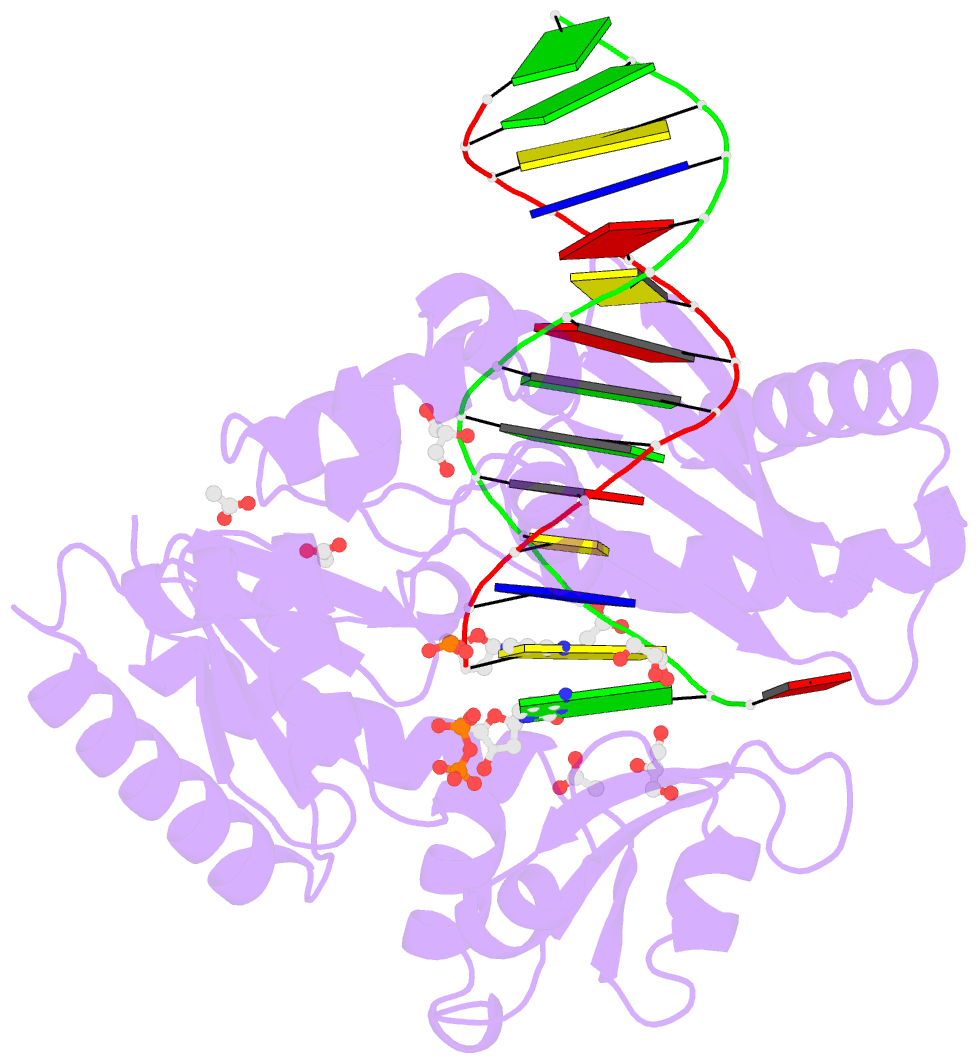Summary information and primary citation
- PDB-id
- 4qwb; DSSR-derived features in text and JSON formats
- Class
- transferase-DNA
- Method
- X-ray (1.8 Å)
- Summary
- Crystal structure of dpo4 linker region p236a mutant with an incoming d-dcdp
- Reference
- Gaur V, Vyas R, Fowler JD, Efthimiopoulos G, Feng JY, Suo Z (2014): "Structural and kinetic insights into binding and incorporation of L-nucleotide analogs by a Y-family DNA polymerase." Nucleic Acids Res., 42, 9984-9995. doi: 10.1093/nar/gku709.
- Abstract
- Considering that all natural nucleotides (D-dNTPs) and the building blocks (D-dNMPs) of DNA chains possess D-stereochemistry, DNA polymerases and reverse transcriptases (RTs) likely possess strongD-stereoselectivity by preferably binding and incorporating D-dNTPs over unnatural L-dNTPs during DNA synthesis. Surprisingly, a structural basis for the discrimination against L-dNTPs by DNA polymerases or RTs has not been established although L-deoxycytidine analogs (lamivudine and emtricitabine) and L-thymidine (telbivudine) have been widely used as antiviral drugs for years. Here we report seven high-resolution ternary crystal structures of a prototype Y-family DNA polymerase, DNA, and D-dCTP, D-dCDP, L-dCDP, or the diphosphates and triphosphates of lamivudine and emtricitabine. These structures reveal that relative to D-dCTP, each of these L-nucleotides has its sugar ring rotated by 180° with an unusual O4'-endo sugar puckering and exhibits multiple triphosphate-binding conformations within the active site of the polymerase. Such rare binding modes significantly decrease the incorporation rates and efficiencies of these L-nucleotides catalyzed by the polymerase.





